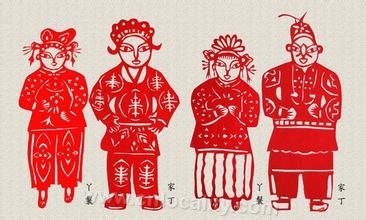welcomeSpecialty Foods Products!

Shangdang paper-cut has a long history, and is native to China. Like flowers in Yuan Ye, Shangdang paper-cut exudes a strong fragrance and is one of the outstanding folk art treasures in China. In what generation did China's paper-cutting come into being? There is no record in history. It was only in 1959 that Dui Ma Tuan Hua and Dui Monkey Tuan Hua were unearthed at Gaochang Site (Astana area) in Turpan, Xinjiang, which recorded "……………………………………………………………………………………………………………………………………………………………………………………………………………………………………………………………………………………………………………………………………………………… Gao Changzhang and the eleventh year, that is, the seventh year of the Great Unity of the Western Wei Dynasty, that is, AD 541, indicate that paper-cutting in China began around this period. However, it is not difficult to see that the carving and paper-cutting of this kind of gold and silver ornaments belong to the system of "color painting" from the exquisite patterns unearthed later, such as the paper-cut of the Northern and Southern Dynasties, the circular gold ornaments of the State of Jin, the bronze ornaments of the Western Zhou Dynasty, the hollowed-out silver ornaments of the Warring States, the Qin Gong Book of the Western Zhou Dynasty and the gold ornaments of the Western Han Dynasty. This shows that paper-cutting can be traced back to ancient times, at least before the Western Han Dynasty. There was an ancient poem to prove it: "Han Fei played in front of the window with her baby in her arms, and skillfully cut tung leaves to shine on the window screen." Although cut on tung leaves, silk and gold and silver, it shows that paper-cutting has already formed. There are similar cultural relics in Shangdang area, which shows that the history of paper-cutting here appeared in the same period of the country. In the Tang Dynasty, Fang Xuanling and Du Ruhui, gifted scholars from xiang yuan, entered the cabinet one after another to pay homage to each other, and brought paper-cutting from Chang 'an, Kyoto, to xiang yuan, which gradually spread in the Party. In particular, Li Longji, Emperor Xuanzong of the Tang Dynasty, ascended the throne after he left Luzhou in his youth, creating a "prosperous new century". With the development of economy and the flourishing of literature and art, folk paper-cutting appeared brilliant. Especially from the founding of New China to the founding of the People's Republic of China, Shangdang folk paper-cutting has matured one after another and enjoyed a high reputation throughout the country. Shangdang paper-cutting art has strong local characteristics and local customs, mostly based on local folk customs and folklore, which is concise, vivid, vivid and unforgettable. In particular, flowers, birds and figures are exquisitely cut, simple and vivid, and exquisite, which has certain collection value.
Reprinted with attribution:
https://cnlocality.com/(Chinese Specialty Products)
other
consult:(+86)13225231905